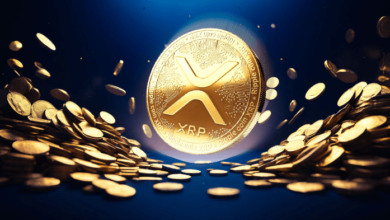Why open interest and trading volume are so important in options trading

Cryptocurrency options trading has become a hot topic in the investment world as more and more people seek to profit from the exciting and fast-paced world of digital assets.
Even amid an incredibly tough period for cryptocurrency trading, crypto options are faring incredibly well – with trading volume in Bitcoin options alone reaching a level of $4.25 billion per week, neither the crypto winter nor the collapse of FTX are slowing the market. Even more impressive is that this activity level is driven primarily by call options.
If you’d like to take a bite out of those potential gains, you’ll need the tools to assess and compare options contracts properly. Similar to spot trading cryptocurrency, there are plenty of metrics you’ll need to include in your analysis – and we’ll start with two simple-to-understand but crucial metrics: trading volume and open interest.
The Basics of Trading Volume
Trading volume is a common metric that you might already be familiar with. It measures the number of assets – whether they be shares or contracts – that are traded within a specific period.
It’s the market’s pulse, providing insight into the level of interest for a particular stock, option, or cryptocurrency. When trading volume is high, it’s a clear sign that there’s a lot of excitement and action in the market. Conversely, low trading volume suggests a lack of interest.
Taking trading volume into account is investing 101 – all investing strategies, from buy-and-hold approaches to stocks to hedging in forex trading take trading volume into account. However, options, being derivatives, are a bit tricky – and investors cannot rely on trading volume alone to make the best decisions.
What Is Open Interest and How Does It Work?
Open interest is a metric that applies solely to derivatives such as options or futures. It indicates the total number of outstanding contracts yet to be assigned, exercised, closed out, expired, or settled.
It’s a key indicator of the market’s commitment to a particular option or cryptocurrency and provides valuable insight into future price movements. The higher the open interest, the more liquidity and volume you can expect in the market. It’s like the fuel that drives the market’s engine – and open interest is used to measure the strengths of existing market trends.
Regarding measuring open interest and how it changes over time, open interest rises if more options contracts are opened than are closed. If more contracts are closed than opened, then open interest falls.
How Trading Volume and Open Interest Demonstrate Liquidity
High trading volume and open interest are vital to market liquidity markers. A market with high liquidity is characterized by low bid/ask spreads, meaning you can quickly buy and sell assets without affecting the overall market price.
This is crucial for beginner options strategies involving long calls, long puts, and straddles, as well as for short-term traders looking to make quick profits, as it allows them to enter easily and exit positions. High liquidity is also desirable for long-term investors, providing them with the stability they need to make informed investment decisions.
For example, let’s say you’re trading Bitcoin options and see a high trading volume and open interest. This is a clear sign that there’s a lot of activity and excitement in the market along with a strong trend, and it’s a good indicator that you’ll be able to buy and sell options quickly.
On the other hand, if you see low trading volume and open interest, it might be a sign to reconsider your investment strategy or look for alternative markets with more liquidity, as those are clear signs of weakening trends accompanied by traders exiting the market.
How Traders Use Open Interest and Trading Volume
Traders use open interest and trading volume data to gain a competitive edge in the market. By tracking these metrics, traders can better understand market sentiment and identify potential market trends.
For instance, if you see a high level of open interest and trading volume, it’s a clear sign that the market is active and there’s potential for price movements. This information can help traders decide when to enter and exit trades.
Let’s turn to a couple of examples to demonstrate. We’ll use a few hypothetical scenarios and draw some likely conclusions. Remember that none of this is the gospel, and exceptions can always occur.
For example, let’s say you’re trading Ethereum options, and you see a sharp increase in trading volume. This is a strong indicator that there’s a lot of excitement and demand for Ethereum options, and it could be an excellent time to consider entering a trade. If open interest is high, this additionally signals that current trends are vital – if underlying asset prices keep rising, this is a powerful bullish signal.
On the other hand, if prices are rising, volume is high, but open interest is falling. This means that the volume is driven by people leaving the market. This is a sign of a bullish trend slowing down or potentially reversing.
If an asset is in a downtrend and you see an increase in trading volume and open interest, it might be a sign that the surge of activity is caused by short selling – and the selling pressure of short selling will drive prices even lower. This is a textbook example of rising open interest signaling a strengthening of a current trend – only in this case, it is a bearish trend.
Conclusion
In conclusion, open interest and trading volume are critical technical indicators that traders and investors can use to gain a deeper understanding of the cryptocurrency market. Luckily for us all, these glimpses into investor sentiment and trend strength are pretty straightforward (at least as far as technical indicators go).
Whether you’re a short-term trader looking to make quick profits or a long-term investor seeking stability, understanding how to use these financial metrics is essential to making informed investment decisions. The rising open interest and trading volume seen in early 2023 indicates that the crypto winter might be thawing.
Guest post by Shane Neagle from The Tokenist
Shane has been an active supporter of the movement towards decentralized finance since 2015. He has written hundreds of articles related to developments surrounding digital securities – the integration of traditional financial securities and distributed ledger technology (DLT). He remains fascinated by the growing impact technology has on economics – and everyday life.





